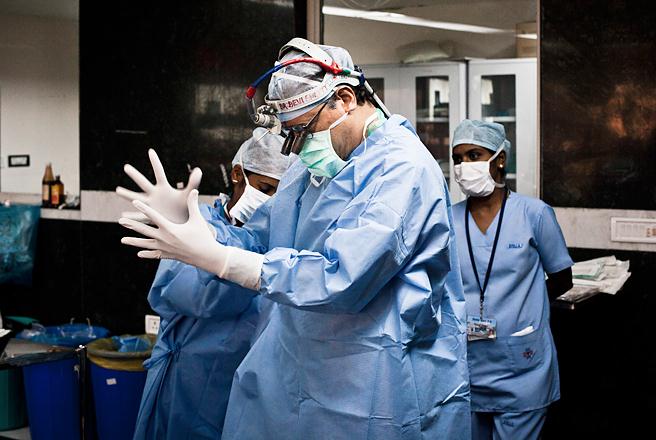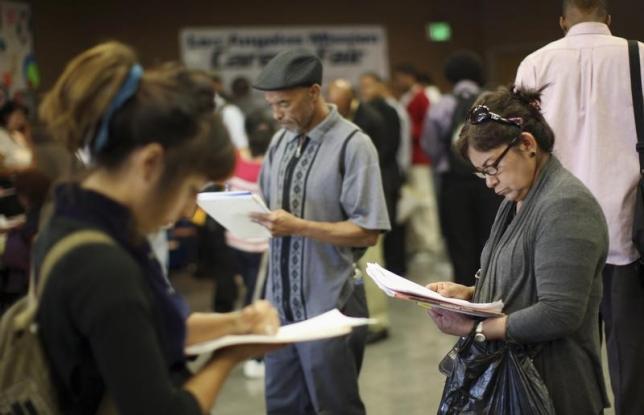February 13th, 2012
Narayana Hrudayalaya is Walmart meets Mother Teresa.
The organization, a complex of health centers based in southern India (narayana hrudayalaya means "God’s compassionate home" in Sanskrit), offers low-cost, high-quality specialty care in a largely impoverished country of 1.2 billion people.
February 13th, 2012
Narayana Hrudayalaya is Walmart meets Mother Teresa.
The organization, a complex of health centers based in southern India (narayana hrudayalaya means "God’s compassionate home" in Sanskrit), offers low-cost, high-quality specialty care in a largely impoverished country of 1.2 billion people.
Shetty operates six days a week. Operations typically last four hours unless complications arise
By thinking differently about everything from the unusually high number of patients it treats to the millions for whom it provides insurance–and by thinking a lot like the world’s largest retailer–the hospital group is able to continually wring out costs. Narayana Hrudayalaya’s operations, for instance, include the world’s largest and most prolific cardiac hospital, where the average open-heart surgery runs less than $2,000, a third or less what it costs elsewhere in India and a fraction of what it costs in the U.S.
Narayana Hrudayalaya’s origins date back to 2001, when it built its massive cardiac center on the outskirts of Bangalore. But it has expanded since then into what founder Dr. Devi Shetty calls a "health city," a series of larger-than-usual centers specializing in eye, trauma, and cancer care on 35 sprawling acres. What’s more, Narayana Hrudayalaya now manages or owns hospitals in 14 other Indian cities. Its telemedicine practice, in which each surgeon has Skype on his laptop, extends its reach even further, to 100 facilities throughout the country and more than 50 in Africa. The newest initiative, dispersing 5,000 dialysis machines, will make the company the country’s largest kidney-care provider.
Expanding access is paired with a relentless focus on efficiency. Typically, says Shetty, private hospitals in India focus on patients who can easily afford treatment. "We did it the other way around," he says. "This hospital is for poor people, but we also treat some rich people. So we’re mentally geared for people who are shabbily dressed and have trouble paying. We don’t look at them as outsiders. We look at them as customers." Narayana Hrudayalaya’s flagship hospital has 3,000 beds, more than 20 times as many as the average American hospital. The company (mostly family owned, with JPMorgan among a handful of investors) negotiates for better prices and buys directly from manufacturers, cutting out distributors. Starting with cardiac care, an equipment-intensive specialty, made it easier for the hospital group to expand into other areas that require the same infrastructure. "Cardiac surgery is like a moving train," Shetty says. "We’re just adding other cars."
The company targets even routine inefficiencies. A beefed-up support staff handles the onerous paperwork for surgeons, freeing Shetty and his colleagues to perform more operations than a typical cardiac surgeon would, about a dozen a week. And because they work on a fixed salary instead of per operation, the cost to the hospital drops when the number of procedures increases. "More than 100 years after the first heart surgery, less than 10% of the world’s population can afford it," says Shetty. "That’s why we concentrate on the mechanics of delivery. It’s the Walmart approach."
In addition to cost-cutting, Narayana Hrudayalaya finds creative ways to make the economics work. The company started a micro-insurance program backed by the government that enables 3 million farmers to have coverage for as little as 22 cents a month in premiums. Patients who pay discounted rates are in effect compensated by those who pay full price or opt for extra perks. Typically, the latter group includes foreigners for whom a $7,000 heart operation, access to an experienced specialist, and a deluxe private room is a relative bargain. The balance of patients is, in fact, crucial. Every day, Narayana
Hrudayalaya’s surgeons receive a P&L statement of the previous day that describes their operations and the various levels of reimbursement. The data allow them to add more full payers, if necessary (unless urgent health issues dictate otherwise). "When you look at financials at the end of the month, you’re doing a postmortem," says Dr. Ashutosh Raghuvanshi, Narayana Hrudayalaya’s CEO. "When you look at it daily, you can do something."
And doing something–doing more, actually–is the point. By 2017, Shetty, 58, envisions expanding from 5,000 hospital beds throughout India to 30,000. He could barely have imagined such an empire 15 years ago. Before becoming one of India’s best-known health-care entrepreneurs, Shetty was its best-known heart surgeon. He was interrupted in surgery one day during the 1990s by a request to make a house call. "I said, 'I don’t make home visits,' " Shetty says, "and the caller said, 'If you see this patient, the experience may transform your life.' " Which is exactly what happened. The request was from Mother Teresa. Inspired by the iconic nun’s work with the poor, he then set out to create a hospital to deliver care based on need, not wealth. No doubt she would be pleased by the results. "One lesson she taught me," he says, quoting a saying he keeps framed in his office, "is 'Hands that sew are holier than lips that pray.' "

















































































































